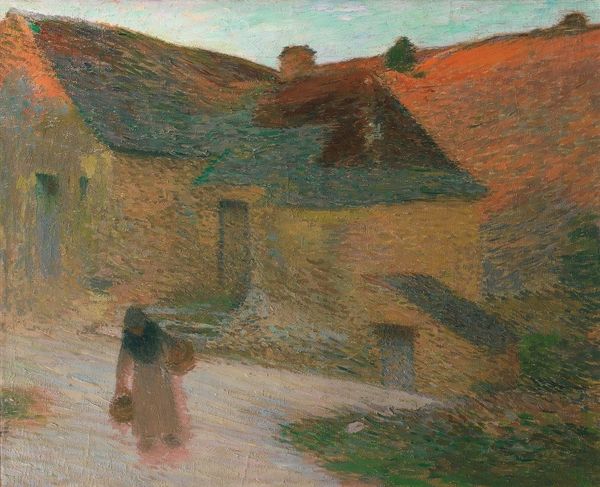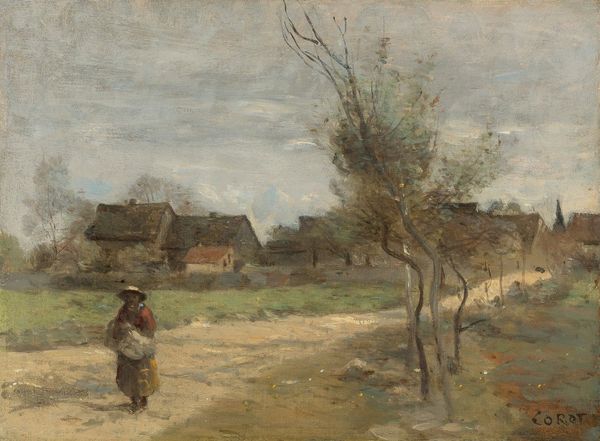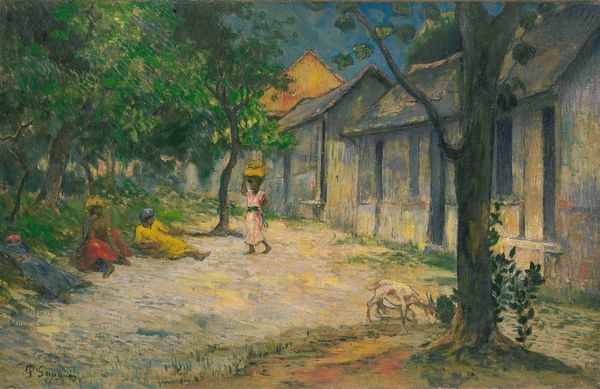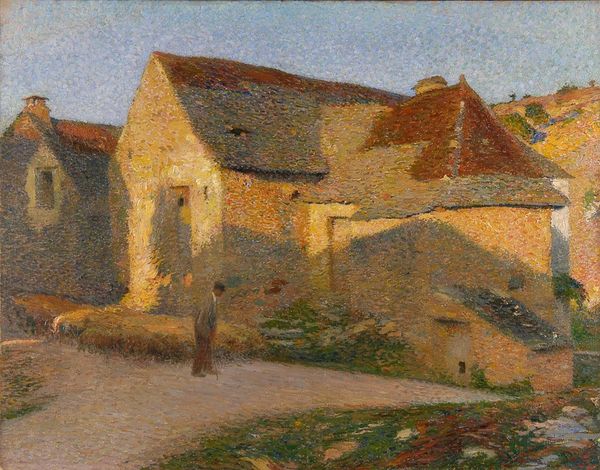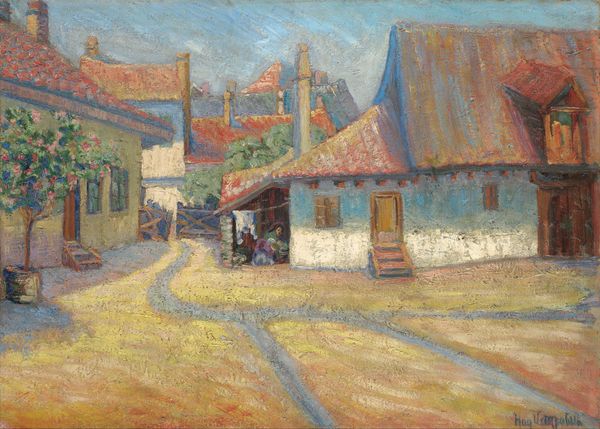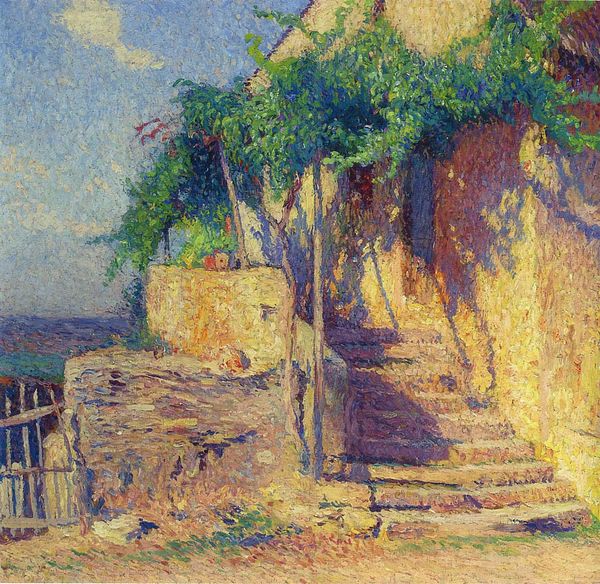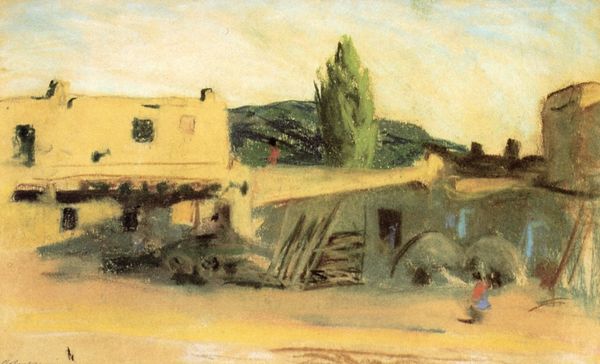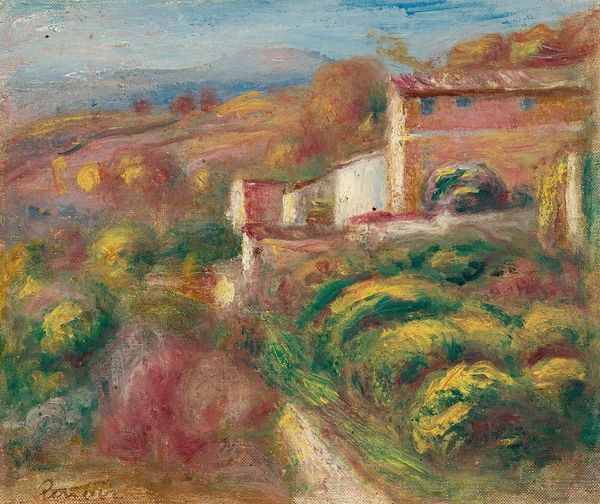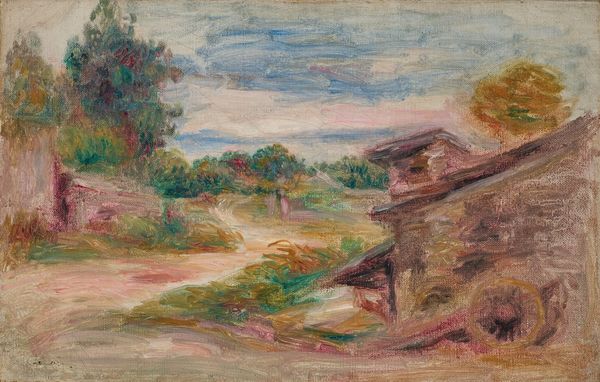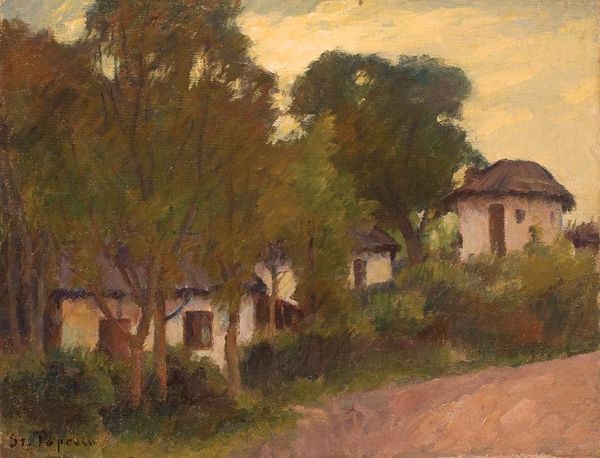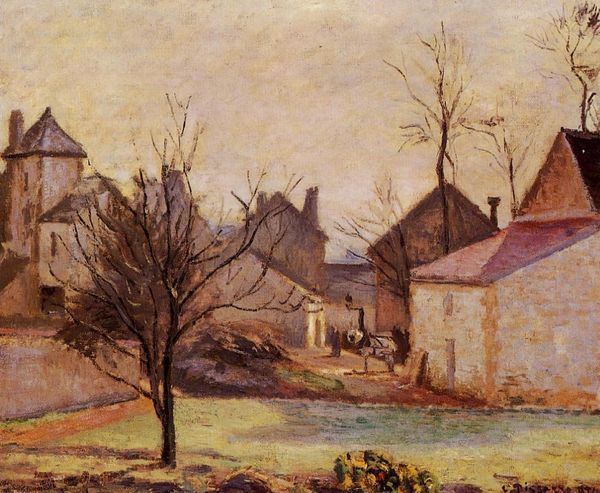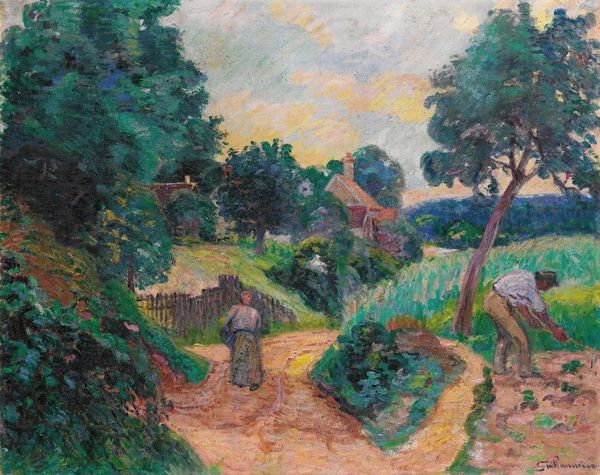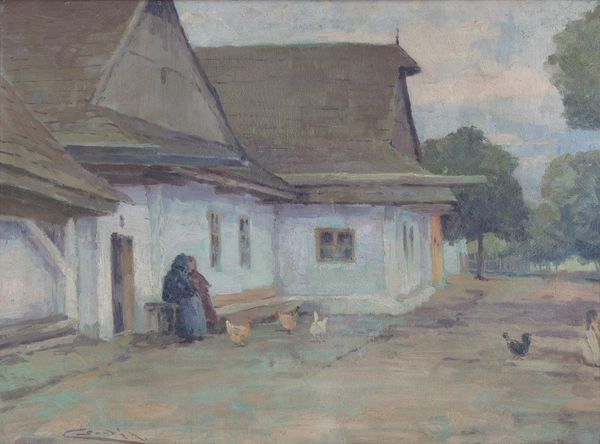
painting, oil-paint
#
portrait
#
art-nouveau
#
painting
#
oil-paint
#
landscape
#
figuration
#
oil painting
#
modernism
#
realism
Copyright: Public domain
Curator: Let's consider Nadezda Petrovic's painting "Jewish Girl in Belgrade," completed in 1908. Editor: The composition strikes me immediately. It's almost aggressively simple: the curving street, the stark buildings, and the figure—a study in muted tones against the whitewashed walls. It feels melancholic; almost oppressively still. Curator: I think you’ve put your finger on something important, Editor. The painting’s apparent simplicity belies the social commentary embedded within. Nadezda Petrovic, as a politically engaged artist, often used her work to depict marginalized figures within Serbia, advocating for greater recognition and equality. Depicting this Jewish girl becomes an act of asserting her presence and worth in a society where she’s often unseen, unheard. Editor: Right. And technically, I'm also intrigued by the almost Impressionistic brushstrokes. There's a softness, a haziness, that envelops the scene, which adds to the sense of quiet introspection. Notice how light almost dissolves the edges of the buildings, creating a subtle dynamism? Curator: Exactly. It is a blend of realism with modernist approaches; where brushwork, color, and figuration work toward articulating the experience of cultural identity. It acknowledges that Jewish women in Belgrade face additional marginalization resulting from historical exclusions and social inequalities linked to gender and religious identity. The artwork, therefore, stands as a powerful statement of visibility and resistance through which Nadezda attempts to promote understanding and empathy between the various communities of the city. Editor: This makes sense; in semiotic terms, she's disrupting expected relationships within a culturally legible system of signs and symbols. It’s a way of saying, “look closer”, but also subtly shifting perspective by positioning her subject against the existing cultural paradigm of early 20th century Serbia. The treatment of light almost veils the reality to create a psychological portrait as well as a material one. Curator: Agreed. Hopefully, our brief interaction allows others to recognize that this compelling composition gives voice to forgotten figures in history by intertwining identity with cultural realities. Editor: And also allows people to engage with painting from the vantage point of appreciating the artistic language the painter uses. It makes a case for close examination of an aesthetic feat as it embodies both artistry and intentional expression.
Comments
No comments
Be the first to comment and join the conversation on the ultimate creative platform.
